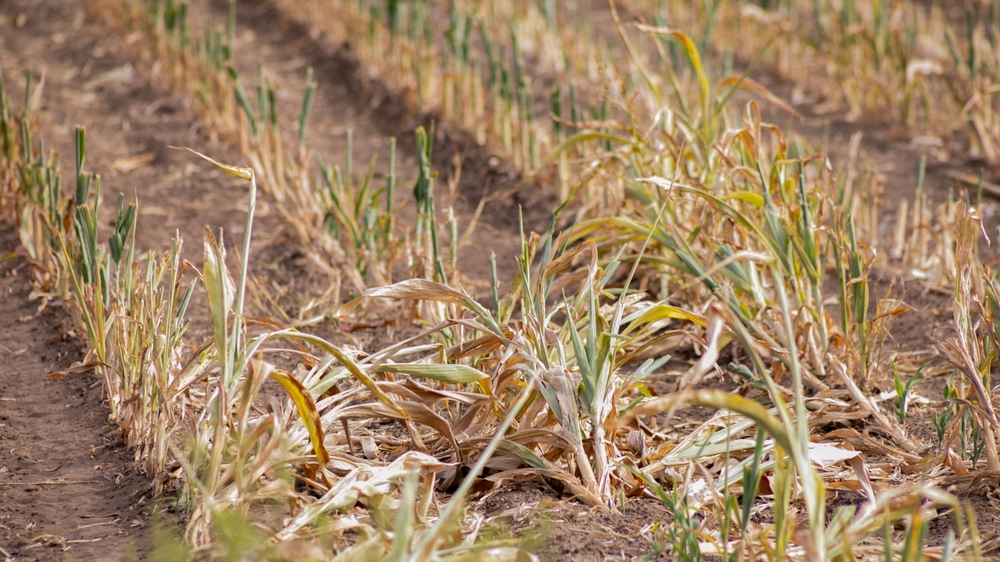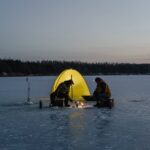Global Temperatures Will Rise Faster Than Expected, Causing Droughts, And Other Severe Impacts

Time is slipping away faster than we expected. For years, scientists warned about rising global temperatures, but new AI-driven climate models confirm that the crisis is unfolding even sooner than anticipated.
The projections have changed. By 2040, much of the world will have surpassed the critical 1.5°C warming threshold. By 2060, some regions could be nearing 3°C. This acceleration isn’t just an abstract prediction—it’s a wake-up call. Because every fraction of a degree means the difference between stability and chaos.
What does this mean for us? For our cities, our food, our way of life? The answers aren’t comforting, but they are clear. And if we don’t act now, we may run out of choices altogether.
AI Unveils the Urgent Truth: Climate Change’s Rapid Advance
For years, climate models predicted a gradual rise in global temperatures. But recent AI-driven forecasts are rewriting the timeline.
These advanced models, analyzing vast amounts of historical and real-time climate data, now show that the planet is warming faster than we thought. By 2040, most land areas will have surpassed the critical 1.5°C warming threshold. By 2060, some regions could be nearing 3°C. This isn’t a distant scenario—it’s unfolding in real time.
Why? Because we haven’t just increased greenhouse gas emissions—we’ve created a system that accelerates its own destruction. Deforestation strips away the planet’s natural cooling system. Industrial expansion and fossil fuel dependence pump more carbon into the air. As temperatures rise, extreme weather becomes more frequent, melting ice caps, intensifying wildfires, and disrupting weather patterns. This feedback loop pushes us closer to irreversible tipping points.
But AI isn’t just predicting disaster—it’s revealing where and how these changes will hit hardest. Unlike older models that provided broad estimates, AI-driven forecasts are pinpointing regional vulnerabilities with alarming precision. The result? A future where extreme weather isn’t just more frequent—it’s more intense, more unpredictable, and more disruptive than anything we’ve faced before.
The Regions at Highest Risk
 Image source: Pexels
Image source: Pexels
Climate change isn’t an equal-opportunity disaster. Some regions will bear the brunt of its fury, and for millions of people, survival will become a daily battle.
- South Asia: With heat waves already reaching deadly levels, South Asia is staring down a future where outdoor work becomes impossible for much of the year. Water shortages will escalate, crippling agriculture and straining public health systems. Densely populated cities, where millions depend on seasonal monsoons, will face severe disruptions—threatening food security and displacing entire communities.
- The Mediterranean & Central Europe: The Mediterranean, once defined by its mild and inviting climate, is transforming into a furnace. Droughts will push local farmers to the brink, wildfires will become more frequent, and water resources will dwindle. Even Central European nations—once thought to be safe from climate extremes—are now feeling the heat, with rising temperatures threatening infrastructure and food production.
- Sub-Saharan Africa: In a region already battling food and water insecurity, climate change is like fuel on a fire. As severe droughts devastate farmland, millions will be forced to migrate, leading to escalating political instability and conflict. Rapid urbanization will stretch cities beyond their limits, and dwindling resources will push struggling communities to the breaking point.
For these regions, climate change isn’t a slow burn—it’s an approaching wildfire. And if we don’t act, the destruction won’t stop at their borders.
Why Droughts and Heatwaves Are More Dangerous Than We Think
 Image source: Pexels
Image source: Pexels
Some disasters strike like a wrecking ball—hurricanes, floods, wildfires. Others creep in like a slow poison, draining life from the land and the people who depend on it. Droughts and heatwaves are among the deadliest consequences of climate change, yet they rarely command the same urgency as storms or rising seas.
Droughts don’t just dry up rivers—they break entire ecosystems. When the rain stops falling, farmlands turn to dust, livestock starve, and food prices skyrocket. The American Southwest, Spain, and parts of Africa are already seeing farmers abandon their land because the soil can no longer sustain life. And it’s not just agriculture—without water, industries stall, cities struggle, and even the most advanced economies buckle under the pressure.
In 2023, record-breaking heat sent hospital admissions soaring across Europe and North America. Thousands suffered from heatstroke, power grids failed, and roads buckled under the scorching temperatures. Heatwaves disproportionately target the most vulnerable—the elderly, low-income communities, and anyone without access to cooling. Cities like London and Berlin, never built for extreme heat, now face temperatures once exclusive to desert climates.
The Hidden Domino Effect
The real danger of these “silent catastrophes” isn’t just their immediate impact—it’s how they compound other crises. Droughts fuel food shortages, which lead to political instability. Heatwaves push energy demands to their limits, causing power outages and economic slowdowns. These aren’t isolated problems. They are warning signs of a world on the brink.
We often measure disasters by how loud they are. But sometimes, the quiet ones leave the deepest scars.
The Role of AI in Climate Predictions – And How It Can Help
 Image source: Shutterstock
Image source: Shutterstock
For decades, climate forecasting was limited by the tools we had. Scientists relied on historical trends and large-scale models that painted broad pictures but struggled with short-term, region-specific predictions. AI is changing that.
By processing vast amounts of data—from satellites, weather stations, and ocean sensors—AI-driven climate models now provide real-time insights into how and where temperatures are rising. Unlike older models that gave general global estimates, AI pinpoints regional vulnerabilities with unsettling accuracy. This means cities can plan for heatwaves, farmers can adjust to shifting weather patterns, and energy grids can prepare for surging demand.
AI isn’t just forecasting disaster; it’s helping prevent it. It’s improving carbon capture technology, optimizing renewable energy systems, and guiding smarter infrastructure design. Companies and governments are already using AI to make solar and wind energy more efficient, reduce emissions in manufacturing, and rethink urban planning to withstand extreme weather.
But let’s be clear—AI isn’t a magic fix. It won’t stop climate change on its own. The data is there, the solutions exist, but technology is only as powerful as the action we take. AI can guide us, but it’s up to us to decide whether we follow its warnings—or ignore them until it’s too late.
What Can We Do?
 Image source: Pexels
Image source: Pexels
Let’s be real—climate change feels overwhelming. It’s easy to think, What can I really do? When governments drag their feet and corporations put profits first, it can feel like nothing we do matters. But that’s not true.
Every movement in history started with people who refused to accept things as they were. The truth is, we don’t have to wait for someone else to fix this. We have power—more than we think. And it starts with action, right where we are.
- Use Your Voice—Because It Matters: Think your voice doesn’t count? It does. Every time we speak up—whether it’s voting for leaders who prioritize the planet, pushing companies to go green, or educating others—we shift the conversation. Silence is what keeps things the same. But change? Change happens when people demand it.
- Spend Your Money Like It’s a Vote: What we buy (and don’t buy) sends a message. Companies listen when profits are on the line. Supporting brands that use sustainable practices forces businesses to follow suit. Cutting back on waste, choosing local products, and reducing meat consumption all chip away at the problem. We don’t have to be perfect—we just have to be intentional.
- Small Changes, Big Impact: Nobody’s asking you to live off the grid or never drive a car again. But small choices add up. Take public transport when you can. Cut down on plastic. Be mindful of energy use. Every action—no matter how small—is a step toward a future where we don’t just survive, but thrive.
- We Still Have a Choice—But Not Forever: Climate change isn’t some distant problem—it’s happening now. And the scariest part? We’re the last generation with a real chance to do something.
The world won’t be saved by a single politician, a single company, or a single act. It’s going to take all of us, making better choices, pushing for change, and refusing to accept the idea that it’s too late.
So the real question isn’t Can we do something?—it’s Will we?
The Clock is Ticking—But Hope Isn’t Lost
It’s easy to feel like we’ve already lost. Every year, wildfires rage, oceans rise, and heat waves push cities to their limits. But here’s the truth: it’s not over.
We have the tools. AI is refining climate predictions. Renewable energy is more affordable than ever. We know what’s fueling the crisis, and we know how to stop it. The question isn’t whether we can—it’s whether we will.
Every choice we make—how we vote, what we support, how we live—pushes us closer to one of two futures. One where we ignored the warnings, or one where we took action and changed the course of history.
We are the generation standing at the edge. The choice isn’t just ours—it’s yours.
So what are you going to do?
Featured Image Source: Shutterstock
Loading...






